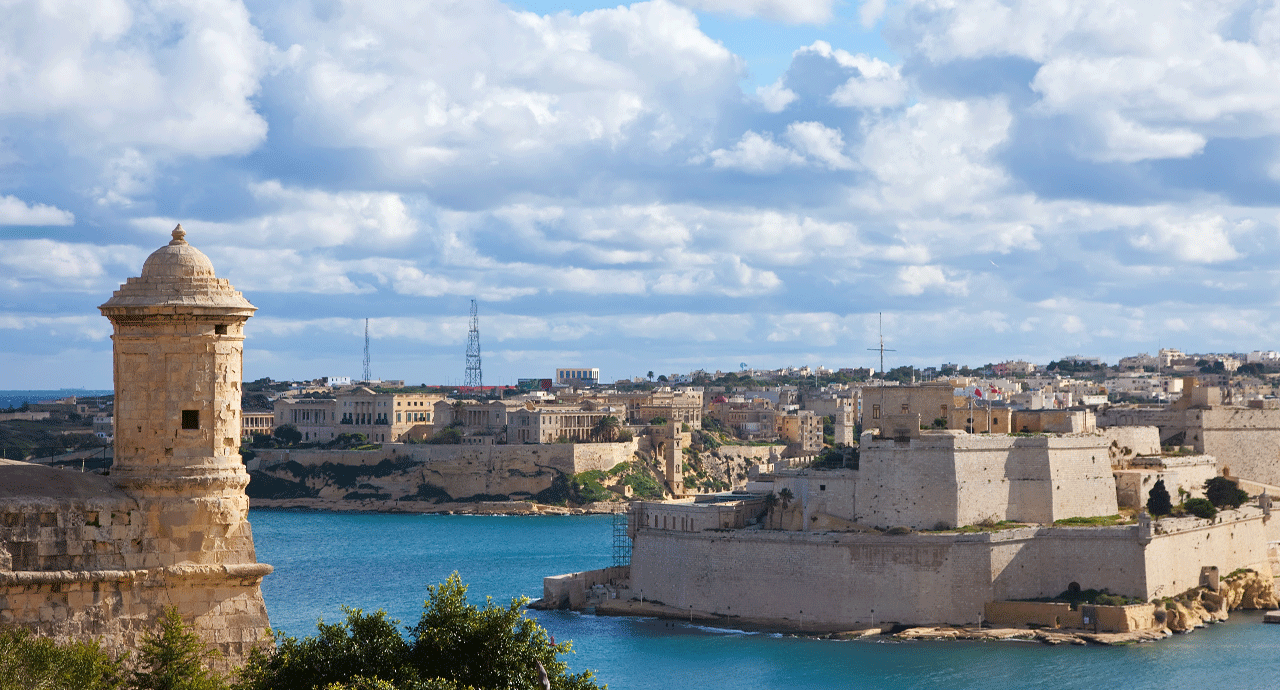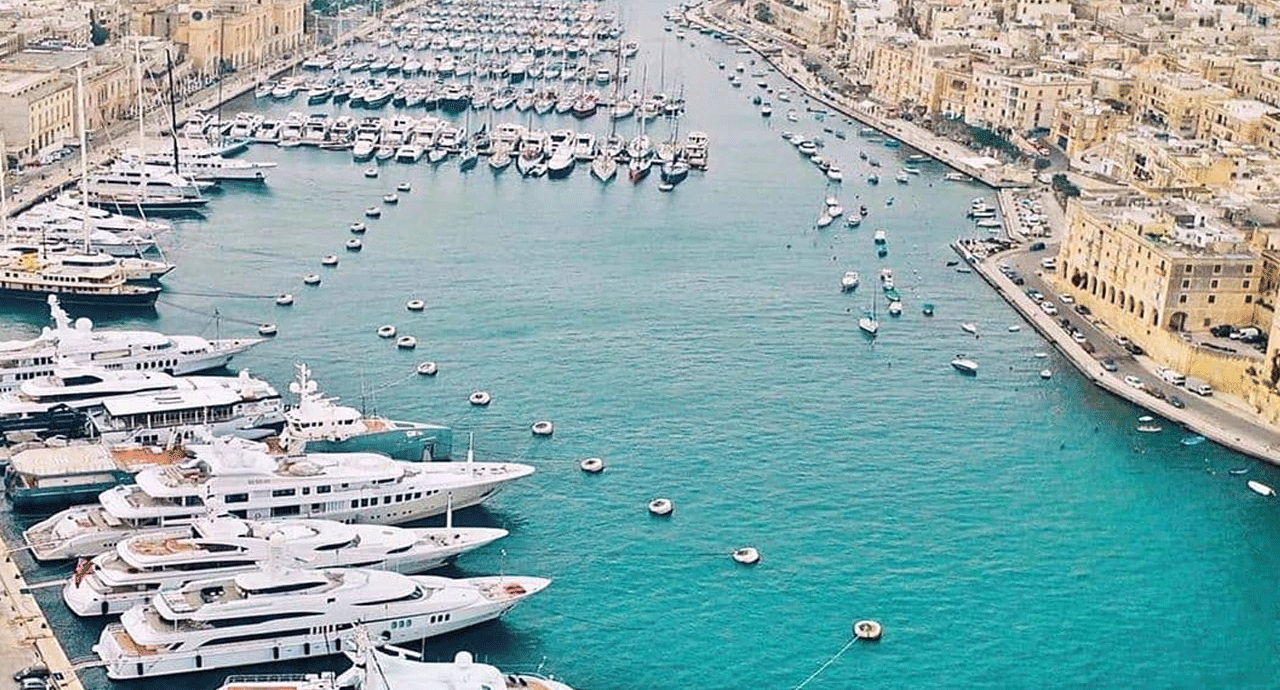Our Latest Blogs
from around the Maltese Islands
Birgu
Birgu - the historic seat of the Order of Malta
Birgu is the most interesting of the Three Cities. In addition, it has retained its historic atmosphere, and a walk along the local streets allows you to go back several centuries in time. Birgu was the seat of the Order of Malta from 1530 to 1571 and we can still find buildings from that period. The most modern area is the renovated coast where expensive ships and yachts are moored. Having more time, however, it is worth going deeper into the town and walking around it without a map. Birgu is so small that we will pass each of the streets in no more than an hour.
Fort Saint Angelo
Fort Saint Angelo, renovated in recent years, is a symbol of Birgu and the entire Grand Harbor. The monumental complex constantly reminds of the courage of the islanders who stood up to the overwhelming forces of the invader.
The present appearance of the fort, however, differs from that of the Great Siege. At the end of the 18th century, the complex was rebuilt according to the intention of the Flemish engineer Carlos de Grunenbergh. He designed four batteries facing the entrance to the Grand Harbor, which could hold up to 50 guns.
The British, who installed their naval command in the fort in the 20th century, also left their mark. The fort survived World War II in good condition, although bombs fell on it several dozen times.
Thanks to renovations in recent years, the complex has regained its former glory and is now one of the most popular attractions on the island.
Only some people know the interesting story that Fort St Angelo hides. On December 5, 1998, a treaty was signed between Malta and the Sovereign Military Order of Malta granting the Order the upper part of Fort St. Angelo, including the Grand Master's House and the Chapel of St. Anna, with limited extraterritoriality. Its stated purpose is "to enable the Order to better carry out its humanitarian efforts as Hospitaller Knights of Saint Angelo, and to better define the legal status of Saint Angel, subject to Malta's sovereignty over it."
This treaty was ratified on November 1, 2001. The agreement is valid for 99 years and allows the Government of Malta to terminate it at any time after 50 years. According to the agreement, the flag of Malta is to be flown with the flag of the Order in a prominent position above Saint Angelo. Asylum cannot be granted by the order and, in principle, the Maltese courts have full jurisdiction and Maltese law applies.
When going to Fort Saint Angelo, it is worth remembering that it does not function as a museum like Fort St. Elma in Valletta. It also does not offer the possibility to visit many original rooms. A visit to the St. Angelo Fort gives us the opportunity to walk around the historic complex and admire the views of the Grand Harbor and the surrounding area.
During the visit, visitors will have the opportunity to watch films about the history of the Great Siege and the times of war, and to look inside the chapel.
Saint Lawrence Band Club (Palazzo Huesca)
In 1883, two music societies, which consisted of many musicians from the previous band, which had been disbanded for various reasons, joined forces to create a new music club suitable for city residents who had been in love with music for hundreds of years. Of course, after the merger of these two societies, a new music club was created and called "L'Uniane". This name was appropriate because unlike other clubs that arose out of misunderstandings, this Vittoriosa Band Club was made of unity. Back then, the club was going through both good times and bad times. It peaked between 1910 and 1927 when the band's club was under the baton of Conductor Giovanni Giumarra and Carl Maria Artz, when the club was sought after for concerts and services to the point of making 57 programs in 1926. After the war, thanks to the work of club secretary Benny Dalmas and music director Pa?ifik Scicluna, and a number of musicians who remained active until the end, the club resumed its activities through its musicians and members in 1943, when the band club took part in the feast of St Lawrence of that year. Since then, under the wise direction of Dr. Giovanni Calleja, Dr. Paul Mallia with the current president of Lawrence V. Farrugi, the club continued to work on the structure of the Palazzo, and the musicians under the leadership of the ensemble director Hector. Dalli and Pawel Schembri. In 1978, in direct response to the love of the people of Vittoriosa for St Lawrence, the name of the club was changed from "HRH Duke of Edinburgh" to "St Lawrence Band Club’’. This place has operated for years up to the present day, where it performs over twenty services, programs and various music services.
Today, the St Lawrence Band Club is a must-see place for anyone visiting the Maltese Three Cities.
Here you can admire the beautiful architecture and eat something delicious - a perfect place to relax after a stroll through the streets of Birgu.
Malta Dockyard
Malta has been a shipbuilding and repair center for hundreds of years, and boats were built in the Grand Harbor as early as the 15th century. However, it was not until the 19th century that shipyards became a real source of trade in Malta in Paola, Marsa, Cospicua, Senglea and Vittoriosa. The advent of the steam engine offered Malta great opportunities for heavy industry development, and the Malta Royal Naval Dockyard soon became the most important and busiest naval base in the Mediterranean, employing thousands of Maltese workers. It was originally located around Dockyard Creek and occupied several shipyard buildings previously used by the Knights of Malta. By 1850, the facilities included warehouses, a rope factory, a small steam factory, catering facilities, homes for shipyard officers, and most of all, a dry dock - the first to be equipped with a Royal Shipyard outside the UK. Started in 1844, the dry dock was opened in 1847. About 10 years later it was expanded to form a double dock. In the second half of the century, the steam factory was expanded along with machine workshops and foundries.
However, it very quickly became clear that more space than the crowded quays of Dockyard Creek was needed to accommodate the ever-larger ships and the Royal Navy's fleet stationed in Malta. It was decided to expand to the neighboring French Creek, and between 1861 and 1909 another five dry docks were built along with an assortment of buildings serving the Navy.
Undoubtedly the Malta Shipyard was an important naval base at Malta's Grand Harbor in the Mediterranean Sea.
The infrastructure that continues to operate is currently operated by Palumbo Shipyards. It cannot be forgotten that these docks were the first to be built outside Great Britain. To this day, 5 of them are in operation and civilian ships are being repaired in them. Today, the area around the Shipyard of Malta is an ideal place to admire the fabulous landscapes and move for a moment to the magical history of the Maltese archipelago.
Malta Maritime Museum
Malta's largest and most interesting museum. Due to the required space (for example, entire warships), the space of the former British Navy bakery was arranged under the museum. It is a place made with panache and imagination. They managed to collect an amazing number of exhibits from various eras, divided into numerous installations and exhibitions. A separate room presents a cross-sectional history and interesting facts related to marine engineering. The most interesting exhibits were definitely several dozen traditional Maltese boats. The museum building makes a great impression, especially with its size and richly decorated facade (the inspiration was the residence of the British royal family). Be sure to go there in the evening, when the building is illuminated by spotlights and lanterns.
Palace of the Inquisitor
The third most important of Birgu's monuments is the Inquisitor's Palace. For over 200 years (from 1574 to 1798), this building was the seat of the Inquisition, an infamous investigative and judicial institution whose primary task was to punish heretics.
The history of the palace dates back to the 30s of the 16th century. Soon after arriving on the island, the hospitals erected a gothic edifice for a tribunal called Castellania. This court ruled in Birgu until 1572, after which he was transferred to a new seat in Valletta.
The former tribunal building did not remain without a host for long. In 1574, Pietro Dusina, an envoy from the head of the Church, who became the first Grand Inquisitor of Malta, came to Malta. The Joannites offered him the former tribunal building, in which private quarters for the incumbent inquisitor, a court and a prison were arranged.
For over two centuries, several dozen inquisitors sent by Rome came to Malta. Many of them introduced their own modifications to the palace, and the result of their efforts was the transformation of the austere building into a typical Roman palace. Only one internal courtyard with a characteristic vault has survived from the original gothic building.
The story of the Inquisition in Malta ended with the arrival of the French. However, they did not demolish the seat of the tribunal, as they did elsewhere, and changed its purpose. From the end of the 18th century, the palace served many functions (including a hospital).
Few Inquisition tribunals have survived to our day, and the Inquisitor's Palace is probably the only one that can be visited. The palace ceiling in the main hall was decorated with wood carved coats of arms of all 62 inquisitors - 22 of them became cardinals and 2 popes (Alexander VI and Innocent XII).
Currently, the National Ethnographic Museum operates within the walls of the building, which focuses on the history of the Inquisition in Malta. In the museum we will also be able to see; prison cells, a torture chamber, a courtroom, residential apartments and a kitchen.
Parish Museum in the former Oratory of St. Joseph - this small museum is available for free. Among the exhibits, we will see various artifacts related to the order, including: reliquaries, a cross used in public executions, the sword and hat of the Grand Master Jean De La Vallette, and even a carriage.
Norman House (at Triq it-Tramuntana Street) - a building from the 13th century, which was built in the Sicilian-Norman style. The building is distinguished by a gothic window on the first floor. It's worth trying to look inside - entry is free and all donations are appreciated.
Auberge de France a former inn of French-speaking Knights-Hospitallers. The façade is already time-worn, but it's worth taking a look at the architectural details while in the vicinity. Currently, the inn serves as the local council.
The Collegiate Church of Saint Lawrence a baroque church designed by Lorenzo Gafa, one of the most important architects working in Malta. It is the first fine church of the Order before the construction of the Saint-Jean co-cathedral. It is located on the site of a church built in 1090 under the reign of Roger I of Sicily.
On its facade, statues of Saint Paul and Saint Laurent, and inside the paintings of Paladini. Above the altar, ‘’The Martyrdom of Saint Laurent’’, an array of Mattia Preti, the largest that he ever painted. Both - the church building and the paintings of two great artists are an unmissable point and will delight everyone. The church is open to visitors.


